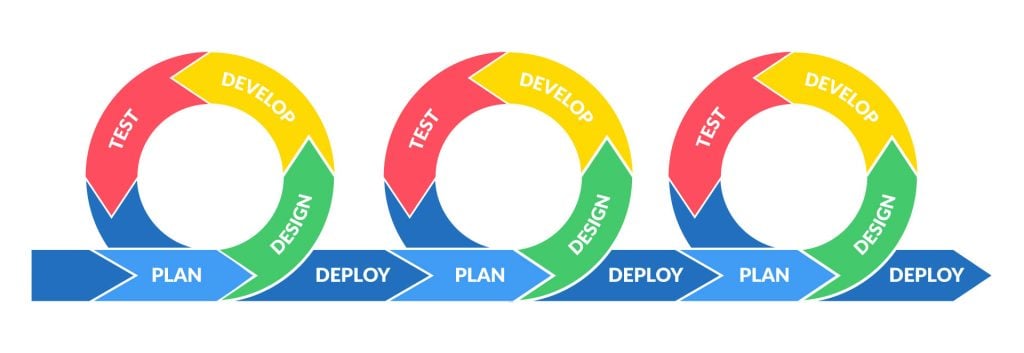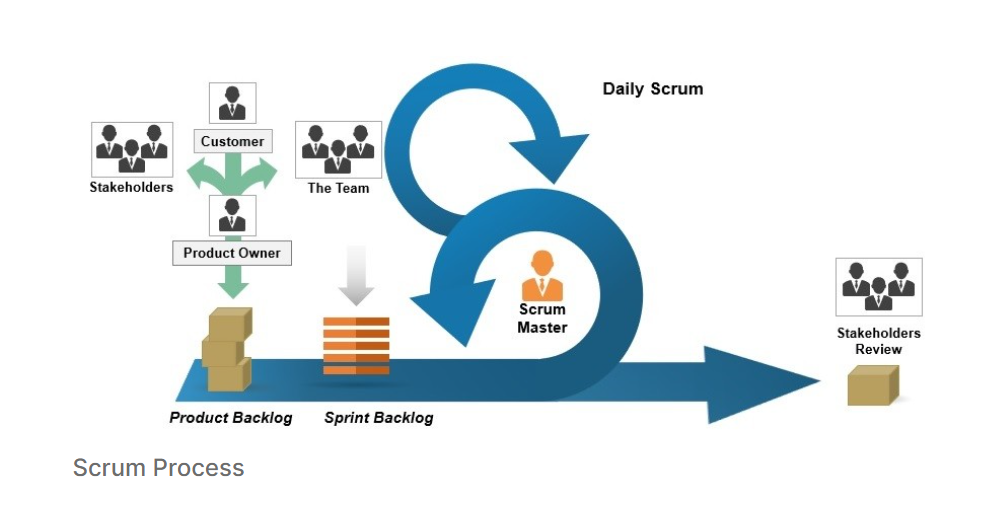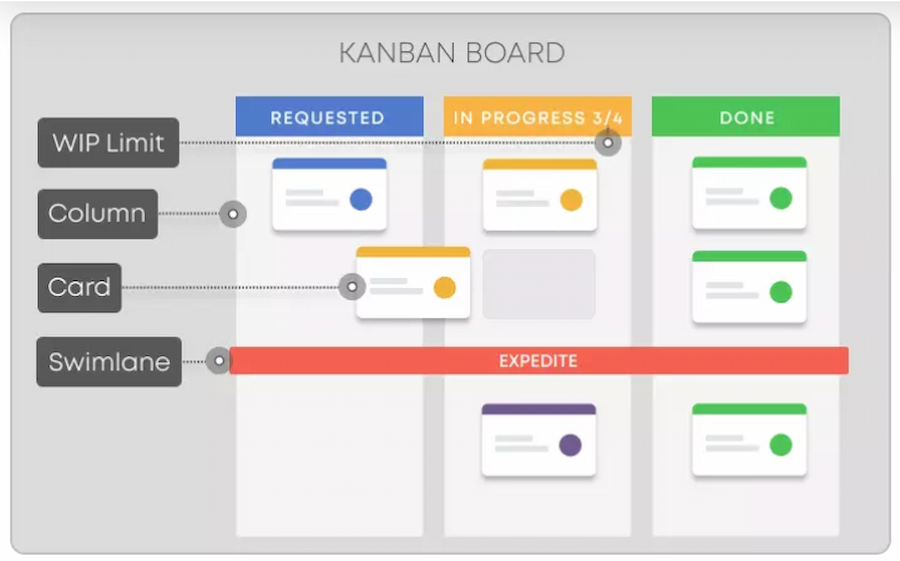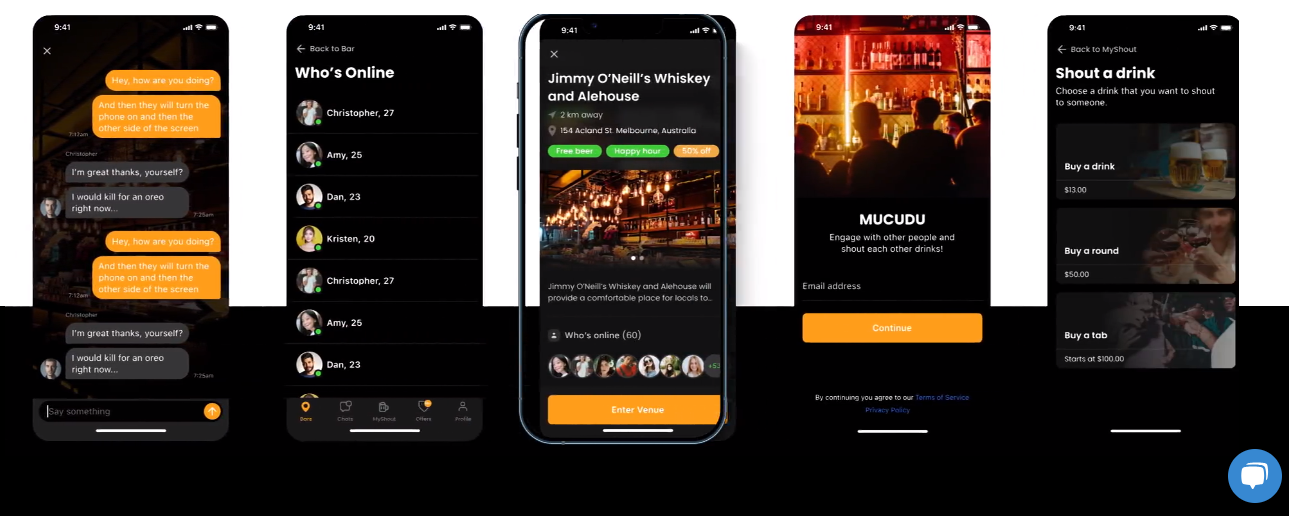Agile Framework: What It Is and How It Can Help You
When you hear the word “agile,” what comes to mind? Athletes going for gold? Sports cars pushing the limits?
In app development, the Agile framework somewhat exudes that same energy. It’s a way of building computer programs where development teams go the extra mile and iterate intensely for the best possible output.
You may not be into developing software. But software is basically just a product of team effort. Hence, the Agile framework holds a lot of lessons for anyone planning to improve their operations or launch their organization in the right direction.
Read this article to learn about the dynamic world of the Agile framework, its advantages, and relevant insights you can apply for growth and progress.
Let’s start by defining the Agile framework and its core concepts.
What is the Agile framework?
The Agile framework is a project management approach that breaks software development workflows into phases that maximize opportunities for continuous collaboration and product improvement. Collaborative meetings occur within development teams and between those squads and their clients to ensure the product or software closely matches client requirements.
Building well-functioning computer programs is the main role of software development teams. However, Agile software development challenges these squads to go beyond mere technical prowess.
First, they have to have communication and collaboration skills . As mentioned, the Agile methodology calls for regular meetings among teams and between them and their clients. This exchange of information ensures the elimination of production bottlenecks and aligns the output with client specifications.
Lastly, developers embracing Agile have to have production flexibility. Since the Agile framework accommodates regular meetings with clients, developers working within this framework have to accommodate changes in software features as clients see fit, even if the changes occur while the software in question is being built.
Agile does away with the traditional software development process, where a single contract sets in stone all the program features a client wants.
Some workflow steps involved in many Agile setups are continuous planning, testing, integration, and other forms of development, while keeping rules and practices minimal.
Now you’ve been introduced to Agile, it’s time to learn what makes it what it is.
Agile framework core principles
The Agile Manifesto is a document that sets forth the main concepts that characterize the Agile framework. The tech experts who wrote this document back in 2001 did so to create software that satisfies clients best, at least cost and waste of resources.
Despite its relatively recent public exposure, the history of Agile goes way back to before the turn of the 21st century. But that’s another story.
At any rate, the Agile Manifesto mentions the four key principles that define this efficient way of software development. These are:
- Individuals and interactions over processes and tools
- Working software over comprehensive documentation
- Customer collaboration over contract negotiation
- Responding to change over following a plan
These Agile principles can be summarized into: Flexibility and efficiency for quicker and better-quality software products.
Save for the occasional genius who writes and publishes their own programs, many big-impact pieces of software these days are built by development teams. Since creating software is a team effort, even non-tech organizations can benefit from the Agile framework. Businesses ripe for Agile implementation include those where constant improvement and quick adjustments are indispensable.
This article will discuss later how to apply Agile in non-tech settings. But for now, let’s take a closer look at the different flavors of Agile frameworks.
The 6 Major Types of Agile
The different Agile variations I will discuss all boil down to a process outlined in the image below:

Source: EOIIN
In essence, Agile is not your typical assembly line with a single start and finish point. The Agile path from start to finish could go around in loops, where software design and development repeat as long as clients aren’t satisfied. Once clients settle for the output, deployment becomes one and the same as a product launch.
Agile approaches mostly adhere to the workflow in the image above. But the following versions of Agile may vary in terms of things like documentation and operational leeway given to teams:
- Scrum
- Kanban
- Crystal
- Dynamic Systems Development Method (DSDM)
- Feature-Driven Development (FDD)
- Extreme Programming (XP)
Let’s look closer at each Agile framework to get a better perspective.
#1 Scrum

Source: Sesame Disk
Scrum is an Agile-inspired framework that breaks down big projects into smaller tasks. These broken-up pieces of work are completed in short development cycles called “sprints.” Each sprint usually lasts two weeks.
Scrum aims to address complex problems while delivering valuable products through continuous improvement. They aim to do so through team meetings that resemble how rugby players huddle (hence the name “scrum”).
#2 Kanban

Source: Kanbanize
Kanban came from a Japanese word that roughly translates to “card you can see.”
Hence, this Agile methodology employs physical or digital boards to represent a team’s workflow. Each board has three columns representing a step in the process, such as “Requested,” “In Progress,” and “Done.” Under these columns are cards that contain task details like status, due dates, and assigned team members.
Originally rooted in automobile manufacturing, Kanban has expanded its application to software development. The migration of Kanban across different industries proves that the usefulness of Agile goes beyond one type of business.
In fact, at Appertiser, Kanban is so useful that we built apps that reeled in a total of $3.5 billion in revenue and garnered 5.5 million downloads. If you want to use mobile and web apps for growth or to scale up your business, feel free to drop us a line.
#3 Feature-Driven Development (FDD)
What feature of your app do you love the most? Is it its capability to conduct a video call? Or perhaps send funny GIFs?
Users have varying feature requirements for different applications or programs. Any mismatch between user needs and the output of a software company is a lose-lose situation for both parties.
Hence, the Feature-Driven Development (FDD) framework was born.
FDD applies Agile best practices while focusing more on the specific features the team aims to develop. It heavily relies on customer input to fine-tune the quality of software features.
To maximize customer satisfaction, FDD demands meticulous documentation and strict organization. Specifically, it involves carefully planning and developing software models every two weeks.
The FDD process can be summarized into the following steps:
- Develop an overall model.
- Create a feature set.
- Plan and organize work based on features.
- Build and implement features.
- Design features iteratively.
Like other Agile frameworks, FDD incorporates frequent project updates that enable the implementation of fixes or quick iterations based on client input.
Some clients we served had particular difficulty with choosing the right feature set. Most of the time, they want to put too many features in their apps. However, we helped them succeed by selecting only the most basic features to get their app launched quickly. Check out our article on the MVP way of app development to learn more about this cost-efficient way of building applications.
#4 Dynamic Systems Development Method (DSDM)
DSDM is an Agile framework mostly used by large organizations.
It emphasizes disciplined processes to help offset the lack of structure in many Agile approaches. For instance, DSDM emphasizes the timely delivery of products and extensive control over projects.
This sort of control manifests itself in the four primary phases typical of DSDM projects. These phases are:
- Feasibility and business study.
- Functional mode or prototype iteration.
- Design and build iteration.
- Implementation.
Despite its relatively solid structure, DSDM aims to be flexible enough to meet the rapid software delivery requirements of the industry. Like Feature-Driven Development, DSDM anticipates rework like feature changes or bug fixes. Similar to Scrum, Dynamic Systems also adopts the concept of sprints.
#5 Crystal
Unlike other Agile approaches, Crystal does not enforce rigid rules to optimize the production process.
At the core of Crystal is the emphasis on the first principle of the Agile Manifesto: valuing individuals and interactions. This framework recognizes that team performance depends on various factors, such as:
- Team size
- Criticality of the project’s outcomes
- Priority of a project compared to other work
Therefore, Crystal mostly focuses on individuals and their interactions instead of processes and tools. It is built upon two basic assertions:
- Teams can find ways to enhance and optimize their workflows.
- Every project is unique and constantly changing, making its team best equipped to plan its workflow accordingly.
#6 Extreme Programming (XP)
Extreme Programming (XP) is an Agile framework emphasizing frequent releases and short development sprints to facilitate adaptability.
Like Crystal, XP follows a set of values rather than rigid steps. These values include simplicity, communication, consistent feedback, and respect.
Like FDD, XP developers begin by planning and understanding customer user stories (informal descriptions of desired software features) and develop software in close coordination with customers. However, XP’s relatively loose organizational structure compared to FDD makes it suitable for smaller teams.
Now you’ve caught a glimpse of the major categories of Agile frameworks, it’s time to discover the advantages you can enjoy from them.
Benefits of Agile framework
The Agile methodology may be known for shaking up the field of software development. But almost any organization can improve through the Agile way of getting work done. Agile can grow organizations by:
- Making teams more adaptable
- Fostering collaboration
- Promoting a customer-centric approach
Let’s delve more deeply into each benefit.
Making teams more adaptable
The COVID nightmare has shown that cataclysmic change can happen in just a few years.
With accelerated change comes the need to adapt, and do so quickly.
Since Agile methods are quite flexible, teams can seamlessly adjust strategies mid-process. Unlike the linear waterfall method, Agile accommodates the rapid changes in many cutting-edge industries. Adaptability enables teams to remain sustainable despite economic or social upheavals.
One company that exemplified adaptability so well is MUCUDU.
Its founders James Gallagher and Zenita O’Neill had been managing multiple hospitality venues for years when COVID hit. Instead of mourning their losses during the pandemic, they conceptualized a unique social app built for the hospitality industry.
Check out the MUCUDU case study to discover how Appetiser helped non-techies James and Zenita build a social app to connect bars and patrons with each other.

Fostering collaboration
Inefficiencies in communicating information have led to frustrated employees. Some of them eventually quit due to misunderstandings in their organizations — causing significant dent on businesses’ bottomline.
According to a Gallup study of U.S. businesses, employee churn losses could run up to $1 trillion. In a way, Agile methodologies could help reduce financial losses inherent in employee turnover.
Research shows that employee turnover rates in American companies were reduced by 50% due to promoting workplace collaboration.
Agile fosters collaborative teamwork by emphasizing face-to-face communication and breaking down project silos. This collaborative approach enhances team dynamics and promotes effective information exchange.
Promoting a customer-centric approach
A study conducted by customer service platform company Zendesk mentions more than 50% of customers will switch to a competitor after just one bad experience.
Given this statistic, Agile workflows could help organizations grow through better customer satisfaction. By engaging in continuous collaboration with customers, Agile teams can bridge the gap between output and customer expectations. This alignment between businesses and customers plays a major role in improving the customer experience.
Where customer experience improves, more customers remain loyal to their chosen brand.
Aside from this, the Agile capability to pivot strategy could help maintain a positive customer experience even when customer expectations change.
Now that you’ve learned the perks you can get from going Agile, it’s time to discover some non-tech use cases for this advanced workflow.
Agile in non-tech industries
As promised earlier in the article, I will show you how Agile is used by establishments that don’t deal with software development. The Agile methodology was applied successfully by the following organizations:
- Lonely Planet
- The Rijksmuseum
Let’s check out how these organizations succeeded through Agile.
Lonely Planet
You don’t need to travel that far to see Agile in action outside tech. Lonely Planet, a travel guide publisher since the 1970s, used the Agile methodology to relieve its overburdened legal team.
A heavy workload started to creep into the team’s morale and job satisfaction. However, the legal squad eventually overcame these challenges by adopting Kanban and Scrum practices.
Through a whiteboard, the legal team was able to prioritize and optimize task assignments. The entire team also regularly reviewed the workflow and made continuous improvements.
Through implementing these Agile practices, the legal team experienced a remarkable 25% increase in productivity within 100 days.
The Rijksmuseum
The Rijksmuseum is the Netherlands’ flagship museum of art and history. But before it implemented Agile, the cultural treasure was in physical decline due to poor organization.
Prior to the museum’s Agile-powered restoration, each room represented a type of art (e.g., one room for paintings, one for sculptures, etc.). This means each room is run by its corresponding curator. The collections were lumped together as long as they were of the same type of artwork, regardless of creation date.
To enhance the visitor experience, the museum reorganized its installations based on timelines rather than types of art. This meant that curators had to collaborate more closely, given that each period in Dutch history is a collection of different visual art forms.
Working groups were formed, consisting of curators and expert art historians. This collaborative approach helped optimize the management of the museum’s collection.
The Rijksmuseum drew 2.25 million visitors in 2013, right after its Agile-inspired restructuring. Ongoing efforts to embrace collaborative and continuous improvement tools have been prioritized by the Rijksmuseum team.
Adopt Agile to adapt
An agile athlete can quickly change direction to adapt and win.
The world of business is rapidly changing. The Agile framework is one of the many tools you can use to respond to changes quickly, like a champion athlete. No matter your industry or organizational concern, you may apply Agile wholesale or cherry-pick the best concepts that will help you the most.
Aside from Agile, do you know what else can help you adapt to the changing times?
One word: apps.
E-commerce reeled in a gross income of around $6 trillion worldwide. Given that apps are people’s gateways to online products and services, designing and developing apps are pursuits you could consider.
And you don’t have to do it alone. Whether starting a new app business or using apps as tools for scaling operations, your chance of success increases the more Agile your app development partner is.
At Appetiser, we are as Agile as app agencies get. As I mentioned, our development team uses the Kanban method. This enables us to optimize our workflows, get client feedback throughout the development process, and reduce development times by 50%. This results in a balance of speed and quality, whether you choose mobile or web apps.
Agility could mean quickness in changing direction. It could also mean flexibility in considering new business perspectives. Why not book a free consultation with us and let’s explore some avenues of success and growth for your team?

Jesus Carmelo Arguelles, aka Mel, is a Content Marketing Specialist by profession. Though he holds a bachelor’s degree in business administration, he also took courses in fields like computer troubleshooting and data analytics. He also has a wealth of experience in content writing, marketing, education, and customer support.


